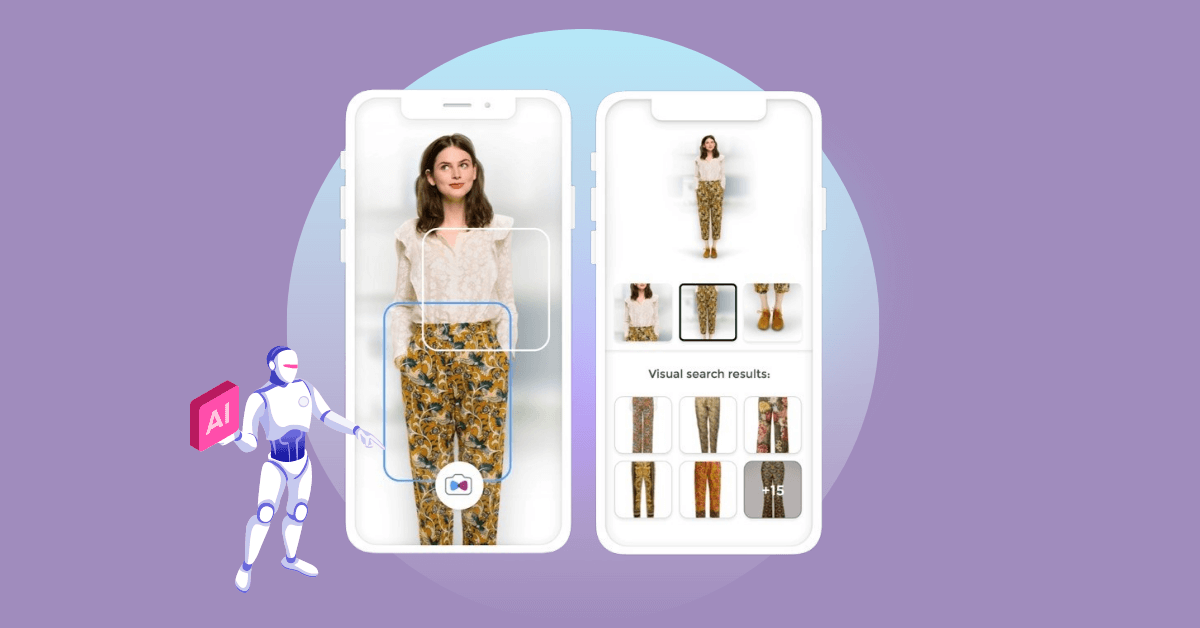The e-commerce personalization market is evolving faster than ever before. Customers demand seamless, efficient shopping experiences from their favourite e-commerce brands, with new technologies, intriguing website features, and the end of a worldwide pandemic.
The two most recent and popular e-commerce trends are search personalization and visual search. These technologies can help consumers find relevant items faster than ever before when utilised correctly. These technologies may boost your conversion rates, increase your income, and – create fantastic experiences that entice customers to keep coming back to your brand.
Technology has drastically changed the way consumers shop. The days of flipping through catalogues and visiting brick-and-mortar stores are long gone. In today’s digital age, shoppers can find anything they need with just a few clicks of a button.
Visual Search and Search Personalization technologies are accelerating this trend forward with breakneck speed – and e-commerce brands are expected to match up to it to stay in the game.
Let’s see what Visual Search and Search Personalization are and how D2C brands can adapt to these emerging technologies.
Visual Search For CX Brownie Points
Another helpful tool for enhancing the customer experience is the Visual Search. VS results instantly display what the client is searching for and help fast-track the sales conversion journey. Customers can use visual search to find items by uploading a photo rather than describing them with keywords, as they would in a text-based search.
Users may click a picture of a product in a store or within a group of friends and then use Visual Search to identify items similar to the related image.
E.g. You went to a party and liked the host’s dinnerware. You can click the dinnerware picture and use visual search to find similar options available on e-commerce portals.
But Why Visual Search?
It’s straightforward to find a product using Visual Search. It delivers a truly seamless customer experience. Consumers can go from seeing something in the “real world” to purchasing it online in only a few clicks. This is the go-to habit for finding the products they wish to purchase for the target audience comprising Gen Z.
According to one research, 71% of internet customers frequently utilise the search feature, and 27% use it. These people don’t want to spend time looking for stuff. They know what they’re searching for, so if you can assist them in locating it, you’ll have a better chance of converting them into customers.
Where Does Visual Search Trump Text-Search?
Users may not know or use the correct words to express what they’re seeking; thus, text-based search is difficult. The visual search employs artificial intelligence to identify and find items, resulting in superior outcomes.
Visual search is also simple to use for finding other goods. Customers can discover various items, choose the best-priced option, or locate a comparable product unavailable at a given store.
Customer expectations for e-commerce are ever-changing. Visual Search is one of those turns that e-commerce retailers must pivot through for growth. More than 50% of the D2C brands are already powering their product discovery through visual search – and 40%+ are planning to get on board this trend soon.
Search Personalization for Seamless Product Discovery
Search Personalization shows relevant items for each unique consumer, removing the need to go through pages of useless information before purchasing.
Every single person on your website will get different results after searching with personalization. It incorporates various elements, including location, gender, previous site activity (such as clicks), and additional information to suggest the most appropriate items for each user.
Personalization is already an essential part of the customer journey, as evidenced by a recent report from Forrester: “Over half of consumers (55%) would be more likely to buy from brands that customised their emails.” Personalised emails are popular among retailers, with 49 percent sending them. 38% customize the homepage per the user’s data, while 48% provide personalized search.
How Personalized Search Creates Better Experiences?
Customers desire a genuinely helpful and quick experience when purchasing goods or services. They’re 77% more likely to stay longer on a personalized webpage that is more interesting and exciting than generic web pages.
Customers do not recall a neutral search experience, and it’s not surprising: they remember only the exceptional and highly awful.
Your e-commerce brand must stand out distinctly to retain consumers through meaningful, personalized search experiences that are gripping and memorable.
Why Personalized Search Trumps Regular Search?
Customers can quickly and easily discover what they want with Personalized Search. Any e-commerce site equipped with PS can recognise their preferences and instantly displays search results tailored to the user’s unique needs.
Personalized Search massively cuts down on users’ search efforts because they no longer have to scroll through things that aren’t required, relevant, or highly filtered.
Take A Step Ahead Towards Visual Search And Personalized Search
With e-commerce brands onboarding the latest tech to remain in the game, you, too, must bring your A-game on.
Visual Search and Personalized Search technologies are becoming a norm in the D2C world – just like mobile commerce. You can empower your brand in the same direction with Wigzo.
Acquire, convert, retain, and grow your customers with Wigzo’s compelling marketing automation suite. Try it for FREE today and see the growth potential for your D2C brand first-hand!
Happy marketing 🙂













